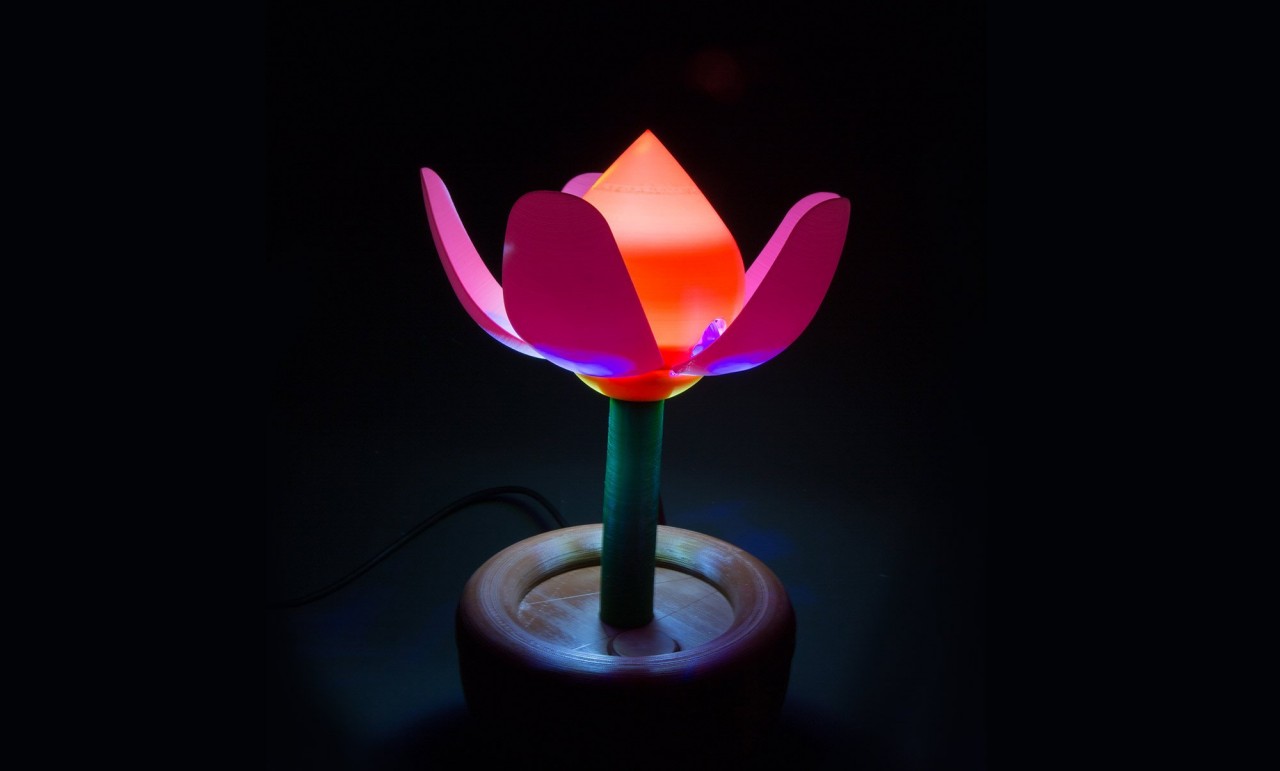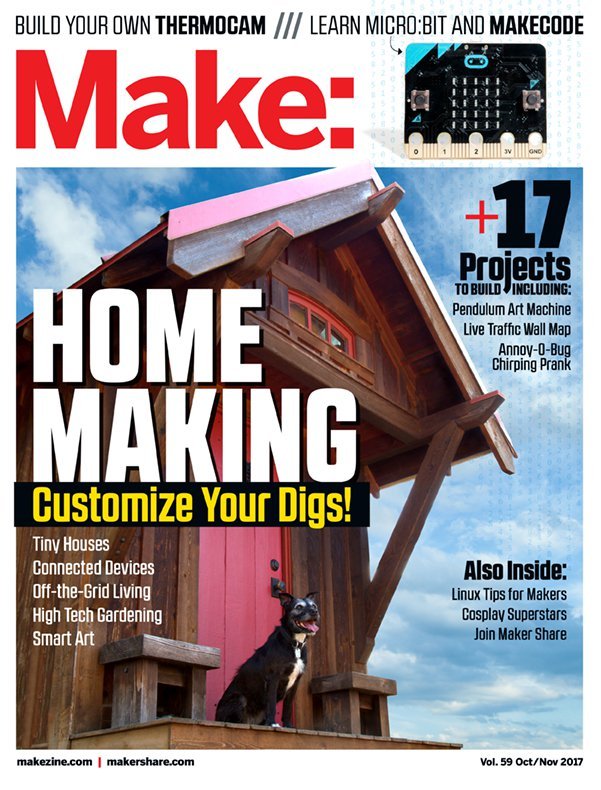

I was assigned the simple task of making a night light for my soon-to-be-born baby girl’s room and, as is my norm, I got a bit carried away, ending up with a fully articulated, Wi-Fi-enabled, 3D-printed night light.
Unfortunately the Wi-Fi idea was over the top, and it never actually got used. There was also far too much hot glue under the hood for my liking, so this revision is a cleaner, simpler version operated with a push button, making use of easily sourced components from Arduino and Adafruit.The heart of this blooming flower is a cable-actuated mechanism, which slides up and down a shaft in the center of the bloom, pulling and pushing linkages that lever the petals in and out. Full-color illumination is provided by two NeoPixel LED rings mounted back to back.
Printing the Parts
Get the STL files (Figures 1-5) and 3D print them (Figure A). Although almost any material should work, PETG is the most suitable due to is flexibility and strong interlayer adhesion, both of which contribute to thin features (like the petals), which can take some abuse.

-

Figure 2
-

Figure 3
-

Figure 4
-

Figure 5

There are a handful of things to keep in mind when printing:
Material
Although almost any material should work, PETG is the most suitable due to its flexibility and strong interlayer adhesion, both of which contribute to thin features (like the petals), which can take some abuse.
Nozzle
I designed this for a 0.4mm nozzle; thin elements like the petals are multiples of 0.4mm thick, meaning that they print as solid pieces (0.8mm in the case of the petals and diffuser bulb)

Support
Very little support material is required, and none is needed on outer visible surfaces. The overhangs on the petals and diffusor have been designed to be less than 45°, making them easy to print.
Try to avoid getting any support structures inside the various 3mm holes (for example, the slots that the petal’s pivots lie in) since it is not necessary and requires cleaning out afterward
Arrangement
Some of the parts can be printed together, such as the mechanical linkages, but I chose to print each petal and the diffuser ball as individual pieces. This is slow going, but it helps maintain perfect surfaces, especially avoiding the nasty stringing that PETG is prone to.
Foundation
The majority of the parts don’t need any brim or raft, but I found it necessary on the “axis” part, since it has such a small footprint.
Lead In
You may want to adjust the lead in (the start point of each loop, called different things in different slicers), or you may end up with a visible line up the middle of each petal, where every loop begins and ends.
Mechanical Assembly
The mechanism and electronics all attach to the top of the pot, allowing easy access to all components until the system is complete, at which point the bottom of the pot can be installed. You can find an assembly video of the first iteration on the project page online.
Note: It’s imperative that all pivoting parts can move with as little resistance as possible. If necessary, use a 3.5mm drill bit to clear and enlarge the holes.
1. Test-Fit the Petals
Ensure that the petals turn smoothly on the 3mm pins (Figure B) — clean out the holes if necessary. If you can’t find smooth 3mm rod, then 15mm–22mm lengths of threaded rod or screws cut with a hacksaw will work just as well. Remove the petals.

2. Insert the M3 Nuts
Place an M3 nut into each of the five hex-shaped recesses in the “receptacle lower” part (Figure C). If they’re too tight due to printer tolerances, carefully pressing them into place with a hot soldering iron works very well.

3. Affix the Petals and stem
Hang the petals into the “receptacle lower” part by the 3mm×15mm pins. Place the “receptacle upper” part over the pins. Fasten the five M3×6mm screws through both parts into the M3 nuts, locking the pins in place (Figure D). Ensure that the petals still move without resistance, then attach the “stem” to the receptacle with the five M3×8mm countersunk screws (Figure E).
-

Figure D. Photos by Luke Artzt
-

Figure E
4. Add the Linkage Assembly
Attach the long side of the five L-shaped “linkage” parts to the “linkage star” with M3×10mm screws (Figure F). The linkages…
The post 3D Print This Blooming Flower Night Light appeared first on FeedBox.